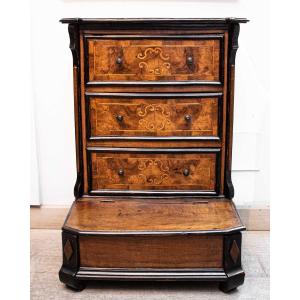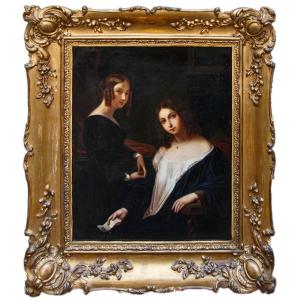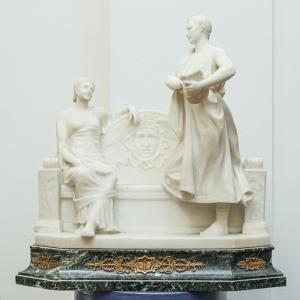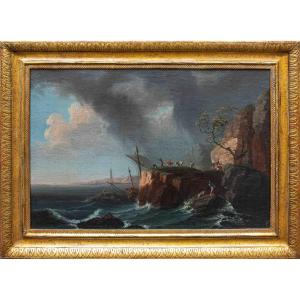Portrait of swordsman profile
Oil on canvas, cm 116 x 92
We are in front of an intriguing seventeenth-century painting, attributable to the Lombard school, which captures the figure of a swordsman profile portrait. The subject’s clothing is a key element that underlines its epoch and cultural influence: he wears clothes in line with 17th century Spanish fashion. The figure of the swordsman emerges with a certain austerity, typical of portraiture of that period. His profile suggests a careful pose, perhaps waiting or observing. The choice to represent it from the side, certainly archaizing matrix, is a clear reference to famous northern Italian portraits made between the fifteenth and sixteenth century and serves to highlight the line of the body and, above all, the details of the dress. The clothes, inspired by the Spanish fashion of the '600, were characterized by a severe elegance and dark colors: the young man wears a frock coat (or jutacuore) tight and padded, which emphasizes the rigid silhouette, a stiff and pleated collar (the so-called gorgiera or lechuguilla), a distinctive element of Spanish fashion that gave an imposing and detached air and the sword, identity element, which hangs from an elaborate golden filigree belt.
The Lombard school of the seventeenth century, while accepting external influences such as the Spanish one, given the Spanish domination on the Duchy of Milan, always maintained its own distinctive sensitivity. This was often manifested in an attention to realism (not surprisingly, the artists active in Lombardy of the seventeenth century are apostrophed by Roberto Longhi "The painters of reality"), a predilection for dark and calm chromatic tones and a certain psychological introspection in portraits.
















































 Le Magazine de PROANTIC
Le Magazine de PROANTIC TRÉSORS Magazine
TRÉSORS Magazine Rivista Artiquariato
Rivista Artiquariato